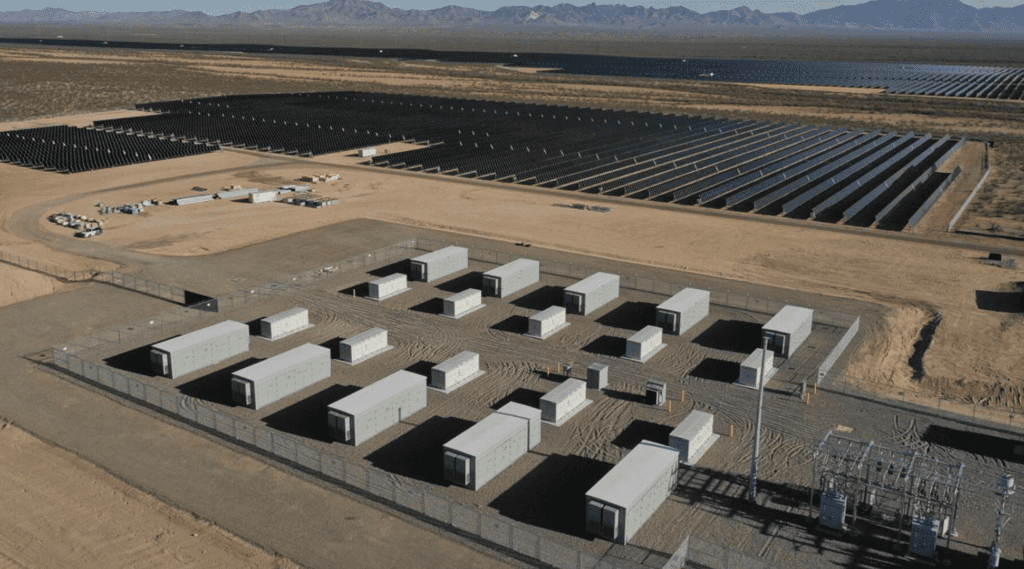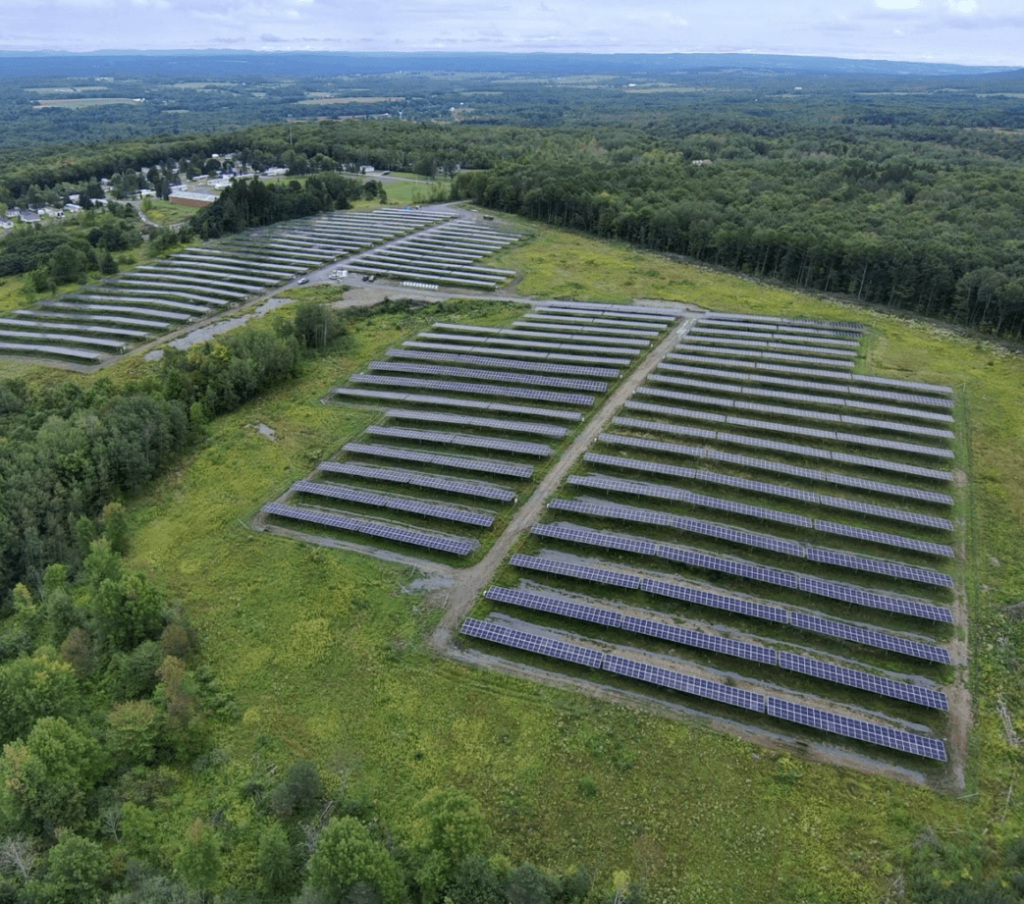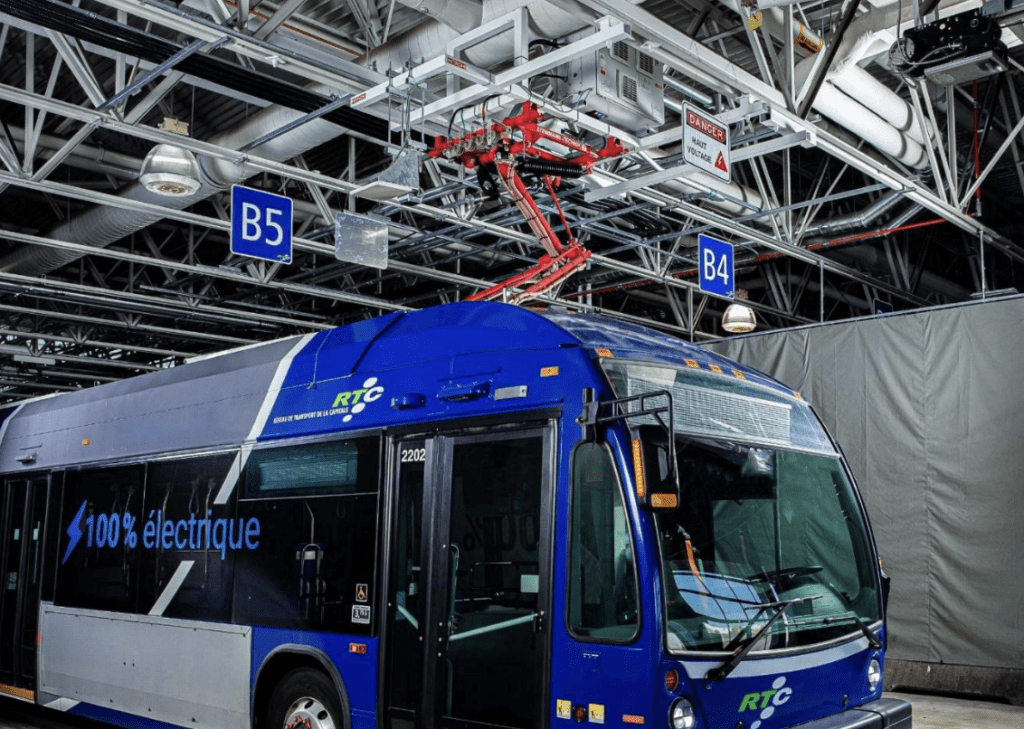POWER Notebook: New Projects For Energy Storage, Community Solar, Electric Buses; Google Announces PPA
An Arizona utility plans to build a battery energy storage system (BESS) that will help it store more of the region’s abundant solar energy, enabling the power to be used after the sun goes down.
Tucson Electric Power (TEP) in early October said it plans to start operating what would be the largest energy storage system on the utility’s grid by summer 2025. Construction of the project is expected to begin by the end of this year. TEP said its proposed Roadrunner Reserve system would have a 200-MW capacity, with storage capacity of 800 MWh.
TEP said it will own and operate the BESS. DEPCOM Power, based in Scottsdale, Ariz., will design and build the sysem. A filing with the U.S. Securities and Exchange Commission related to the project pegs the cost at $294 million. It will be sited near TEP’s existing Vail Substation. The BESS will use lithium-iron phosphate battery cells.

“Roadrunner Reserve will help us maintain reliability as we ambitiously but responsibly expand our community’s renewable resources,” Susan Gray, TEP’s president and CEO, said in a news release. “This new system will be particularly important in helping us satisfy peak energy needs during the summer.” TEP officials said the utility plans to charge the grid-connected system in during morning hours, and in early afternoon during periods of peak sunlight. Power will be dispatched later in the day, during periods of peak power demand.
TEP at present utilizes 51 MW of energy storage capacity. The largest installation in the utility’s current fleet is a 30-MW system at the Wilmot Energy Center near Tucson International Airport. TEP in its 2020 Integrated Resource Plan said it would add as much as 1.4 GW of energy storage to its portfolio by 2035.
Community Solar in New York
DSD Renewables is leading a project to enable Dollar Tree and Family Dollar store locations in New York state to have access to community solar. The stores will receive power from a seven-project, 41.75-MW community solar portfolio. Dollar Tree has a net-zero target for carbon emissions from its operations.
DSD was selected as a partner after Houston, Texas-based NRG Energy assisted in issuing a request for proposals for the project. Dollar Tree is considered the anchor tenant subscriber, as it will take most of the electricity generated by the solar installations that DSD will build in East Syracuse, Cortland, Remsen, Medina, Silver Creek, and Brier Hill.

“Community solar is a unique and emerging energy solution for many of our facilities. Serving as an anchor subscriber will power our facilities with renewable energy and help us toward our future net-zero commitment,” said Jennifer Silberman, chief sustainability officer for Dollar Tree. “Simultaneously, it allows us to deliver real benefits to the communities we serve, increasing access to clean, affordable energy for residents and local businesses.” The portfolio is estimated to generate 55.77 GWh of clean energy annually. Dollar Tree will offtake 16.67 MW of the larger portfolio, offsetting 29% of energy needs across 184 Dollar Tree and Family Dollar stores in New York. Two of DSD-built projects are operating, with the other five under construction and expected to begin operating soon.
Quebec City Electrifying Transport
Hitachi Energy announced it has successfully deployed the first centralized EV bus charging system for Quebec City’s public transit agency, Réseau de transport de la Capitale, or RTC. The Grid-eMotion Fleet EV charging system powers an RTC pilot group of electric buses ahead of Quebec City’s shift to all-electric public transit. Officials said the project is a step toward total electrification for the transit group, with the pilot providing data on the best strategies for charging large numbers of vehicles.
Hitachi Energy’s Grid-eMotion Fleet solution is an integrated charging system that can deliver multi-megawatt level charging capabilities. It is tailored to the requirements of urban bus fleets. Hitachi Enegy said the system requires 60% less space than conventional charging systems, enables a 40% decrease in required depot cabling. It already is in use for urban bus systems in London in the UK, along with Berlin, Germany, and Brisbane, Australia. The Quebec project supports the provincial government’s plan to electrify 55%of its urban buses and 65% of its school buses by 2030.

“Hitachi Energy is proud to support the RTC energy transition through our Grid-eMotion Fleet pilot deployment. This project offers a great opportunity to demonstrate how charging systems designed specifically for fleets can play a critical role in transitioning our urban transit systems to fully electric operations,” said Alireza Aram, managing director, Grid Integration North America for Hitachi Energy. “This exciting project is enabling us to explore different approaches to EV fleet charging in a real-world environment, gathering data that can be applied with public transit agencies around the world.”
Google has PPA with Wind Farm
Google and Apex Clean Energy an announced a power purchase agreement (PPA) in which the search engine giant will take the full 189-MW capacity of the Timbermill Wind farm that will be built in North Carolina. Google said the PPA supports the company’s commitment to power its operations with clean energy by 2030.
“Within the decade, we have an ambitious goal for every Google data center to operate on clean electricity, every hour of every day,” said Donna Calderon, energy senior lead at Google. “We’re excited to work with Apex for the first time to not only add wind power to one of the most difficult grids to decarbonize, but also bring additional clean energy jobs to North Carolina.”
“Timbermill Wind demonstrates the Apex team’s unmatched ability to execute on our expansive portfolio, even in a region notoriously difficult to advance wind power,” said Ken Young, CEO of Apex. Officials said Timbermill Wind will create about $33 million in tax revenue for Chowan County, located in the northeastern part of the state.
Pattern Energy Dedicates Canadian Wind Farm
Pattern Energy on Oct. 13 announced the dedication of its 150-MW Lanfine Wind installation in Alberta, Canada. “Lanfine Wind is a $335 million investment in Alberta that is bringing diverse economic benefits to the region while powering 30,000 homes with clean and renewable energy,” said Hunter Armistead, CEO of Pattern Energy. “We’re proud to have committed $1 million to the Community Foundation of Southeastern Alberta that will go directly to supporting critical local causes and initiatives. Together, we are building a better, cleaner and more sustainable future in Alberta.”
“We have been incredibly fortunate to work alongside Pattern Energy and the local team with the Lanfine Wind Project to help guide their corporate community investment, which will be an integral part in building a vibrant and strong charitable sector for the area,” said Niki Gray, executive director of the Community Foundation of Southeastern Alberta.
The Lanfine Wind project utilizes 35 Vestas V150 4.3-MW turbines, the most powerful turbines in Pattern’s fleet. Lanfine Wind has entered into a 10-year financially settled power purchase agreement with West Fraser, a diversified wood products company. With the addition of Lanfine Wind, Pattern Energy’s portfolio in Canada now totals 11 operational wind energy facilities across five provinces.
—Darrell Proctor is a senior associate editor for POWER (@POWERmagazine).